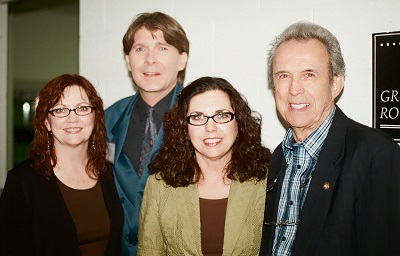The blessings of knowing folks
Could you imagine a life in which you were totally isolated possibly living in a secluded cabin in the mountains of Alaska or somewhere else?
There are some who would easily find their bliss in that situation. Perhaps, I would be one of those, at least that is the way I feel on some days.
Then something will happen that I realize I am not an island even if I like to consider myself one sometimes.
It could be a more intricate house or car repair that requires the help of a talented friend, or perhaps some unexpected calamity that causes me to be laid up for a bit. Then I realize the importance of my church family or even the real ones.
I think back to the first time I ever found myself needing someone other than my mother and father. I was out riding bikes with my friends, when I ended up with the chain locking up as I was going extremely fast down a paved hill. Next thing I know I am flying across the handle bars and sliding as fast as I could down the paved road until I hit a bunch of garbage cans at the curve of the street. It seemed like a half a mile before I stopped hitting those cans.
Thankfully my friends were able to get me up and the lady whose garbage cans I hit came out to help me. The shirt I was wearing was torn up by the pavement, leaving my torso as well as my legs below my shorts covered with sores.
I was a mess. After I was cover in iodine though, I really looked pitiful and it took quite a while for all those spots to scab over and heal up. So, I was sore for quite a while, and that neighbor and my friends got my bike home and me so where my mom could look me after.
After my father passed away, I found myself thrown into the care of the systems of our family home for my distraught mother. The heating unit went out, and thankfully I had played music with someone who owned a HVAC company who sent out one of his men to take care of things and install a new system at a rate better than any other company would. When the roof started leaking, some music fans who did that kind of work and volunteered to drive about 80 miles to roof our house once again, at a special rate.
While all those good Samaritans who helped me out when I needed it, are gone except for my childhood friends who are lost to the wind mainly, Their gifts to me solidified my faith in knowing that we all survive to the best of our abilities when we create good relationships, make friends, and build a life beyond ourselves and our selfish desires.
It taught me the tools that I needed to also be like those people and help others when I could and sometimes when I really couldn’t, but I tried.
God sees within our hearts and knows when we need help and when we need to help others. I think he sends us folks sometimes so that we can stretch our talents and our personality as we learn to outreach to others.
Throughout my life, he has sent others to uplift me, help me and to change my world when it is needed. I am blessed. I hope that you are. If you are not, open the door, walk outside and find someone to help.




